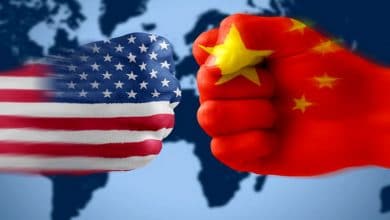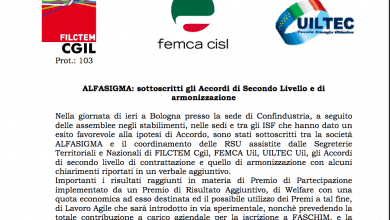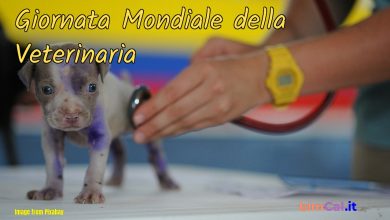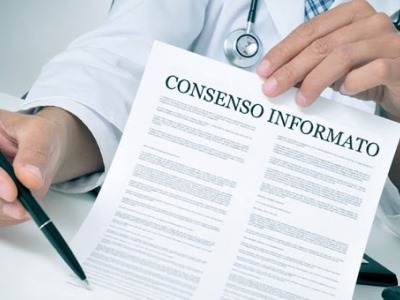
From a regulatory point of view, the art. 32 of the Italian Constitution establishes that no one can be forced to undergo a certain medical treatment except by law, in harmony with the fundamental principle of the inviolability of personal freedom.
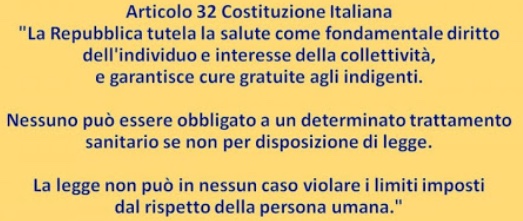 For the purposes of its valid expression, the patient has the right/duty to know all the information available on his own health and illness, being able to ask the doctor, psychologist, nurse or other healthcare professional anything that is not clear, and must have the opportunity to choose, in an informed manner, whether to undergo a specific therapy or diagnostic test.
For the purposes of its valid expression, the patient has the right/duty to know all the information available on his own health and illness, being able to ask the doctor, psychologist, nurse or other healthcare professional anything that is not clear, and must have the opportunity to choose, in an informed manner, whether to undergo a specific therapy or diagnostic test.
This consent constitutes the foundation of the legitimacy of the healthcare activity, in the absence of which the activity itself constitutes a crime. The purpose of the request for informed consent is therefore to promote the autonomy or freedom of choice of the individual in the context of medical decisions.
Exceptions are the cases in which one can speak of implied consent, for example for those routine treatments, or for those medicines prescribed for a known disease. In fact, it is assumed that in this case the information and the relative consent are consolidated.
In the case of drugs then there is the leaflet, the so-called leaflet, which must be present in each package, which is a valuable source of information and guide to the use of the drug.
Contains all the information related to the drug composition, at pathologies for which it is indicated, at mode of 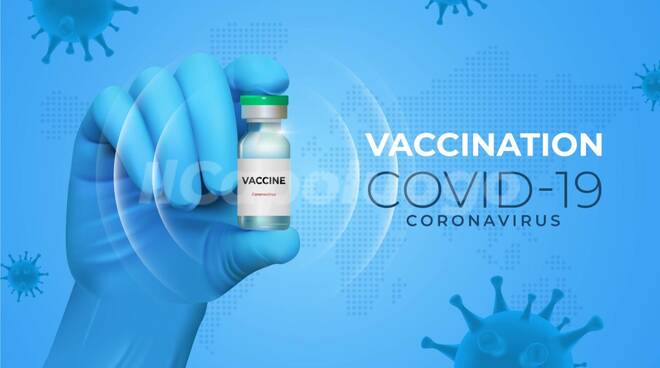 administration and of storage, to the risks that could arise in the event, for example, of overdose you hate interaction with other drugs that they are taking. However, it is important to remember that reading the leaflet does not replace consulting your doctor. By law, pharmaceutical companies are obliged to mention all possible side effects known and reported during the clinical trial or the years of marketing, but this does not mean that all of them must occur in all patients. Furthermore, since each drug is subject to changes during its life - albeit with variable frequency - the SPC and the FI constitute a "dynamic" document which is constantly updated.
administration and of storage, to the risks that could arise in the event, for example, of overdose you hate interaction with other drugs that they are taking. However, it is important to remember that reading the leaflet does not replace consulting your doctor. By law, pharmaceutical companies are obliged to mention all possible side effects known and reported during the clinical trial or the years of marketing, but this does not mean that all of them must occur in all patients. Furthermore, since each drug is subject to changes during its life - albeit with variable frequency - the SPC and the FI constitute a "dynamic" document which is constantly updated.
The Pfizer vaccine is inoculated after being diluted in a special vial (the package contains 195 multidose vials). After dilution, the vial contains 2.25 mL corresponding to 5 doses of 0.3 mL. The healthcare professional will have to take the necessary dose to proceed with the vaccination. It is clear that in doing so there is no package leaflet but, in a certain way, it is replaced by informed consent. So, as specified by the National Plan, before being vaccinated, the interested parties will have to read and sign the consent form, i.e. the document which states that they have been duly informed about the various stages of vaccination as well as possible side effects. Signing the informed consent form is necessary, Therefore, to move forward with the administration of the vaccine. It is with this, in fact, that the "administration of vaccination using Pfizer-BioNTech Covid-19 vaccine”, as required by art. 32 of the Constitution. The "informed consent" in fact responds to the respect for the autonomy of free choice of the people, who have not been forced and in no way represents a subtraction of responsibility of the pharmaceutical company, the healthcare operator or the NHS.
Related news: SPC (Summary of Product Characteristics) of the Pfizer anti-Covid vaccine
- Ema note on Pfizer BioNTech vaccine
- Aifa note on Pfizer BioNTech vaccine authorization
- Questions and answers Emma
- Vaccine plan against Covid-19
- Ministry of Health - Questions and answers Anti Covid-19 vaccines
- AIFA - Questions and answers Covid-19 vaccine Comirnaty
Note:
An mRNA vaccine
Pfizer's vaccine is the first on the market that consists of genetic information from a virus in the form of messenger RNA. Messenger RNA, or mRNA, is a type of molecule whose usual job is to carry copies of genetic instructions into a cell to guide the assembly of proteins. Imagine an mRNA as a long sticky tape carrying instructions. It is very delicate material, which is why Pfizer's vaccine must be stored at approximately -73°C until used.
The new vaccine, administered via injection into the deltoid muscle, contains an RNA sequence taken from the virus itself. It causes cells in the body to produce the large "spike" protein of the coronavirus, which the pathogen uses to target cells and penetrate. By itself, without the rest of the virus, the spike protein is relatively harmless. But the body still reacts to it, as recognized as a foreign agent. This is what determines immunization.
The vaccine mRNA being viral in nature, would be destroyed by our body. Innate immunity has first-line defense mechanisms, including the recognition of pathogen-associated molecular structures (Pathogen Associated Molecular Patterns, PAMPs) which also include nucleic acids (DNA-RNA). These are recognized by particular receptors called TLRs (toll-like receptor) and in particular for the single strands of RNA i TLR7 and TLR8, which destroy these molecules. To avoid this, some of the building blocks of mRNA have been replaced with "modified nucleosides" to "obscure" their presence.
The sequence of the Spike gene has been modified to obtain better immunostimulant performances through the insertion of a double mutated proline which would enhance its immunogenic characteristics.
Lipids
Pfizer's vaccine, like Moderna's, uses lipid nanoparticles to engulf RNA. Nanoparticles are basically tiny lipid spheres that protect mRNA and help it slide inside cells. These particles are approximately 100 nanometers in size. It is roughly the same size as the coronavirus.
Pfizer reported using four different lipids in a "definite ratio." ALC-0315 lipid is the main ingredient of the formulation. This is because it is ionizable. Being able to be positively charged, it binds RNA, which has a negative charge. It is a component that can cause side effects or allergic reactions. The other lipids, one of which is cholesterol, are "adjuvants" that give structural integrity to the nanoparticles or prevent them from aggregating. During manufacturing, the RNA and lipids are mixed in a fizzy mixture to form what the FDA describes as a "white to off-white" frozen liquid. ALC extension–0315 ((4-Hydroxybutyl)azanediyl)bis(hexane-. 6,1-diyl)bis(2-hexyldecanoate) and ALC-0159 (2-[(polyethylene glycol or PEG)-2000]-N,N-ditetradecylacetamide). PEG is the substance believed to have caused the severe allergic reaction in two subjects vaccinated in phase 3.
Salts
The Pfizer vaccine contains four salts, one of which is common table salt. Together, these salts are better known as phosphate buffered saline, or PBS (Phosphate-buffered saline), a very common compound that maintains vaccine pH values close to those of humans.
Sugars
The vaccine includes a very common sugar, sucrose. Here it acts like cryoprotectant to safeguard the nanoparticles when frozen. It prevents them from forming agglomerates making the vaccine unusable.
Saline solution
Before injection, the vaccine is mixed with water containing sodium chloride, or ordinary salt, just like many intravenously administered drugs. Again, the idea is that the injected solution should roughly match the salt content in the blood.
No preservatives
Pfizer has communicated that the vaccine does not contain “preservatives”. This is to convince even the most skeptical of its safety. In fact a preservative used in other vaccines, the Thimerosal (which contains mercury, used to kill any bacteria that might contaminate a vial), has been the focus of intense concern over its role in causing autism. L'U.S. Centers for Disease Control already stated that Thimerosal is safe. However, its use has been phased out. There is no trace of Thimerosal - or any other preservative - in the Pfizer vaccine. There are not even microchips.
The vaccine is known by the code name BNT162b. The commercial name is Comirnaty which mixes together the concepts of community, immunity, mRNA and COVID. The Brand Institute is the specialized agency that created the name Comirnaty and the generic name of the vaccine (tozinameran). “The name is coined by the Covid-19 immunity, and then incorporates the concept of mRNA at its core, which is the technology of the platform, and overall also wants to evoke the word community”



